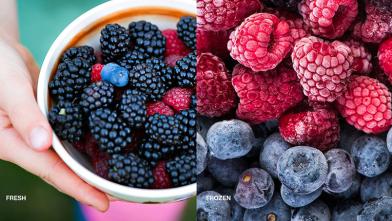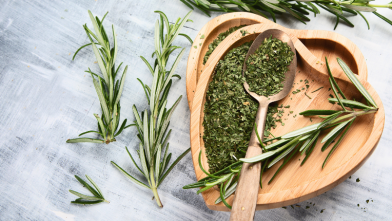Are the noodle days over if you have diabetes? No, but you have to figure out how to fit noodles into your eating plan in a way that helps you manage your blood glucose (blood sugar).
How to Fit Noodles in Your Diet
The typical pasta you’ve probably been enjoying for years can fit into your eating plan, and there are additional benefits if the noodles have been enriched with vitamins and minerals. But traditional noodles are still a carbohydrate. So, be sure to only eat one cup of pasta at a meal. Or follow the Diabetes Plate Method and limit the pasta serving size to ¼ of the plate.
Traditional Noodle Alternatives
To add fiber and nutrients to your pasta dish, find a great whole wheat brand of pasta you’ll enjoy. Generally speaking, one cup of (2 oz) of cooked traditional spaghetti has 200 calories, 42g of carbs, and 3g of fiber. But the same serving of whole grain noodles contains 180 calories, 39g of carbs, and 7g of fiber, making it the higher fiber option. It may take a little experimenting to find one or more with the texture and flavor that work for you, but there are many brands to choose from in supermarkets.
And it’s not just wheat noodles that are a great alternative to traditional noodles, you could also try alternative grain pastas, like those made of quinoa, spelt, and kamut, which also have more nutrients and fiber than white flour pasta—but, you still need to keep tabs on portion size.
There’s also a type of noodle you may not be familiar with. Shirataki—or konnyaku—noodles are traditional Japanese noodles made with konjac flour (a type of yam) and/or tofu. These noodles are also low in calories and gluten free. You can find them in the refrigerated section of Asian markets packaged in water. Rinse and drain them before cooking—about a minute or two in boiling water. Add them to soup or toss with vegetables, proteins, and a sauce using traditional Asian ingredients like soy sauce, ginger, and sesame oil. Or make a delicious pot of tomato sauce and use the shirataki noodles as your “pasta.”
You can also turn low-carb vegetables like zucchini, cucumbers, carrots, and beets into noodles using a vegetable peeler, spiralizer, or mandoline.
Looking at the Whole Picture
Whatever type of noodles you choose, be mindful of what you eat them with. Avoid cream and butter sauces and fried or stir-fried noodles (unless you’re doing the stir frying and can control the amount of oil you use). Tomato sauces, vegetable toppings, and lean protein are best. If you’re adding them to soup, watch sodium levels and high-fat ingredients.








